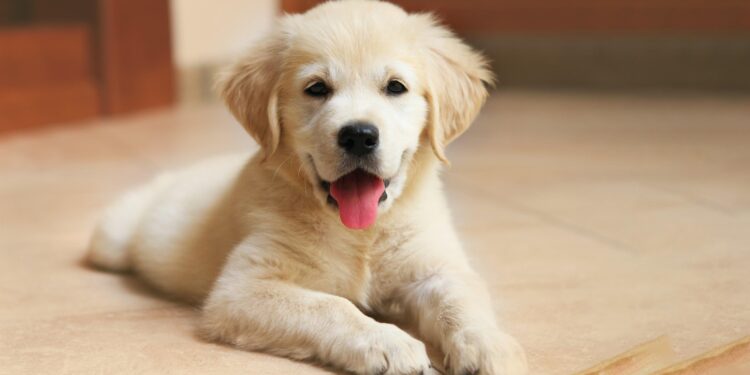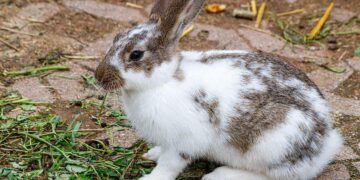Table of Contents
Introduction: The Heartbreak of the Ignored Toy Basket
I remember the exact moment my heart broke, just a little.
It wasn’t a dramatic event, but a quiet, gnawing realization.
My new rabbit, a beautiful lop-eared girl named Clover, was methodically, almost meditatively, pulling up the fibers of my favorite wool rug.
Beside her, untouched and gleaming with the false promise of pet store marketing, sat a basket overflowing with toys.
There were brightly colored plastic keys, wooden balls dyed to look like carrots, intricate willow rings, and a variety of chew sticks that cost a small fortune.1
I had followed all the advice.
I had provided a cornucopia of “enrichment.” Yet, Clover was utterly, profoundly bored.
This scene repeated itself daily.
The expensive toys gathered dust while my baseboards acquired the distinct texture of rabbit-teeth artwork.
I’d find her rattling the bars of her enclosure at night, not out of a desire for a specific toy, but out of a sheer, desperate need for something to do.2
I felt a cocktail of frustration and guilt familiar to so many rabbit owners.
I was failing her.
Was she just picky? Was I a bad “bun mom”? I scrolled through forums and saw my story echoed in countless posts: “My rabbit doesn’t play with toys,” “Help, my bunny is destroying my house!”.2
We were all buying the products, following the rules, and getting the same disappointing results.
The problem, I would discover, wasn’t with our rabbits or even with us.
The problem was that we were fundamentally misunderstanding the very concept of “play” for a prey animal.
We were trying to entertain them like tiny, furry humans, when we should have been honoring their ancient, hardwired instincts.
The solution, the real turning point for me and Clover, didn’t come from another pet store or a rabbit care book.
It came from a completely unexpected place: a local community center, a room full of toddlers, and a transformative concept known as sensory play.
This guide is the story of that discovery.
I’m going to share with you the framework that didn’t just stop Clover from chewing my furniture but also deepened our bond in ways I never imagined.
I promise to show you how to move beyond the cycle of buying and disappointment, and how to become a confident, creative “enrichment architect” for your rabbit.
You don’t need more toys; you need a new way of thinking.
Part 1: The Rabbit Enrichment Myth: Why We’re Getting It All Wrong
Before we can build a better world for our rabbits, we have to dismantle the flawed assumptions that led us to that basket of ignored toys.
The pet industry, often modeling its products on toys for predator animals like cats and dogs, has sold us a myth about rabbit play.
It’s a myth rooted in human-centric ideas of amusement, and it’s the reason our well-intentioned efforts so often fail.
Deconstructing “Play”
For a rabbit, “play” is not a frivolous pastime; it is the rehearsal and expression of deeply ingrained survival instincts.5
A cat batting at a feathered wand is practicing the hunt.
A dog chasing a ball is practicing the chase.
But a rabbit—a prey animal—has a completely different set of behavioral drivers.
When a rabbit tosses a toy, it’s not just a game; it’s an act of rearranging its environment, a behavior they use to organize their space.6
When they chew, it’s not just for fun; it’s a biological imperative to wear down their ever-growing teeth.9
Our failure lies in offering them static, single-purpose objects when their instincts crave dynamic, multi-faceted tasks.
We give them a plastic rattle when they want a complex problem to solve.
We give them a simple chew stick when what they truly desire is a whole construction project.
The Four Pillars of Rabbit Behavior
To truly understand what our rabbits need, we must look at the four instinctual pillars that govern their lives.
All successful enrichment is built upon these foundations.
- Foraging: In the wild, rabbits spend up to 80% of their waking hours searching for food.6 This is their primary job. The behavior involves not just eating, but actively exploring, sniffing, and problem-solving to find sustenance. Simply placing pellets in a bowl robs them of this fundamental daily purpose, leading to boredom and frustration.12
- Chewing/Gnawing: A rabbit’s teeth grow continuously throughout their life, much like human fingernails.5 Chewing on fibrous, tough materials is not a choice; it is a critical activity for dental health, preventing painful and life-threatening overgrowth.9 They also use their mouths to explore and understand their environment, making chewing a key sensory behavior.10
- Digging/Burrowing: Domestic rabbits are descended from European rabbits, a species that lives in complex underground tunnel systems called warrens.14 The drive to dig is a powerful, non-negotiable instinct, especially in females who are wired to create nests.15 Depriving a rabbit of a safe outlet for digging is like asking a bird not to fly; it goes against their very nature and often results in them trying to “burrow” into your carpets and sofas.16
- Shredding/Tearing: This behavior is closely linked to chewing and digging. It’s about deconstruction and manipulation. Rabbits shred paper, cardboard, and other materials to create bedding, clear pathways, or simply engage in the satisfying act of taking something apart.17 Giving a rabbit a phone book to shred (with the glossy cover removed) can be one of the most enriching activities you can provide.17
Why Standard Toys Fail
Now, look back at that sad basket of store-bought toys.
A simple plastic key or a dyed wooden block fails because it engages, at best, only a tiny fraction of one of these pillars.
It offers a surface to chew, but in a static, uninteresting Way. It cannot be foraged for, it cannot be truly dug into, and it cannot be satisfyingly shredded.
The bright colors and cute shapes are designed to appeal to the human consumer, not the rabbit user.20
This fundamental misalignment between product design and the user’s core needs creates a predictable chain reaction.
The toy, being unfulfilling, is ignored.
The rabbit’s powerful instincts, left without an outlet, don’t simply vanish.
They are redirected.
The foraging instinct leads them to “explore” the edibility of your wallpaper.
The chewing instinct is applied to your wooden furniture.
The digging instinct targets the corners of your carpet.
The result is a destructive, seemingly “naughty” rabbit who is, in reality, just desperately trying to do its job in an environment that hasn’t provided the right tools.9
The problem isn’t a picky rabbit; it’s a poorly designed product based on a flawed paradigm.
Part 2: The Play-Doh Epiphany: A New Paradigm for Bunny Happiness
My breakthrough came far from the pet aisle.
I was volunteering at a local community center, helping out in a toddler playgroup.
One afternoon, I watched a child development specialist, a wonderfully patient woman named Maria, set up the room.
She wasn’t just dumping a box of toys on the floor.
She was creating stations.
In one corner, she laid out a large, shallow bin filled with sand and buried small plastic dinosaurs in it.
In another, she set up a table with different colors of scented Play-Doh and cookie cutters.
By the window, there was a water table with cups and funnels for pouring and splashing.22
Maria explained to me that this was “sensory play.” Its purpose wasn’t just to keep the kids busy; it was a critical part of their development.
The sand bin developed fine motor skills and tactile awareness.
The Play-Doh engaged their sense of smell and creativity.
The water table was a lesson in cause and effect.
She said, “We’re not giving them answers; we’re giving them problems to solve.
We’re building their brains”.25
That’s when it hit me.
The lightbulb didn’t just go on; it exploded.
I looked at that sand bin and saw a digging box.
I looked at the Play-Doh and saw a forage M.T. I looked at the kids, utterly absorbed in their multi-sensory, task-oriented play, and I saw what Clover was missing.
I wasn’t giving her problems to solve; I was just giving her objects.
I wasn’t engaging her senses; I was just offering a single, boring texture.
I wasn’t honoring her instincts; I was trying to impose my human idea of “play” onto her.
Introducing the “Sensory Station” Model
That day, the “Sensory Station” model for rabbit enrichment was born.
The philosophy is simple but transformative: Instead of providing individual, single-purpose toys, we must create multi-sensory, interactive “stations” designed to engage one or more of the four core behavioral pillars.
A Sensory Station isn’t a thing; it’s an environment.
It’s a designated area that invites your rabbit to perform their natural work.
It combines textures, scents, challenges, and rewards.
It turns their living space from a sterile holding pen into a dynamic, engaging world.
The analogy to toddler sensory play isn’t just a cute comparison; it’s a direct, functional parallel.
Both are about providing the right tools for instinct-driven exploration and learning.
To make this crystal clear, I’ve created a table that directly translates the principles of early childhood development into our new rabbit enrichment framework.
This is the conceptual heart of the entire approach.
Table 1: The Sensory Station Paradigm – From Toddler to Rabbit
| Toddler Sensory Activity | Core Developmental Goal (Human) | Rabbit Sensory Station | Core Behavioral Goal (Rabbit) |
| Sand/Rice Bin with Hidden Toys 22 | Fine Motor Skills, Tactile Exploration, Object Permanence 23 | The “Snuffle” Digging Box | Satisfies Digging Instinct, Encourages Foraging, Provides Mental Stimulation 15 |
| Scented Play-Doh 23 | Olfactory/Tactile Stimulation, Creativity, Cause & Effect 25 | The Forage Mat/Box | Engages Olfactory Sense (Smell), Promotes Natural Foraging Behavior 12 |
| Shape Sorter / Puzzle Box 22 | Problem-Solving, Shape/Color Recognition, Hand-Eye Coordination 26 | The Treat Puzzle Board | Mental Stimulation, Problem-Solving, Prevents Boredom 29 |
| Building Blocks / Cardboard Fort 22 | Spatial Reasoning, Engineering Skills, Environmental Control 23 | The Cardboard Castle | Environmental Manipulation, Chewing, Shredding, Creating Safe Hiding Spaces 6 |
| Water Table with Floating Toys 31 | Understanding Physics (Buoyancy, Gravity), Cause & Effect 22 | The Tossing Station | Environmental Rearrangement, Physical Exercise, Mimics Clearing a Space 8 |
| Shredded Paper / Bubble Wrap 24 | Auditory/Tactile Stimulation, Deconstruction, Stress Relief 31 | The Shredding Box | Satisfies Shredding Instinct, Nesting Behavior, Stress Relief 17 |
This table is your Rosetta Stone.
Every time you feel the urge to buy a simple plastic toy, look at this table.
Ask yourself: Which developmental goal am I trying to meet? Which core behavior am I honoring? This shift in perspective is the first and most important step toward revolutionizing your rabbit’s world.
Part 3: The Sensory Station Blueprint: Your DIY Guide to a Happier Rabbit
Theory is wonderful, but the real joy comes from putting it into practice.
This section is your workshop.
We’re going to roll up our sleeves and build a series of Sensory Stations, each one designed to target the core instincts we’ve identified.
These projects use cheap, safe, and readily available materials.
Remember, your rabbit doesn’t care about price tags; they care about purpose.17
3.1 The Foraging Station: Engaging the Nose, Brain, and Paws
This station is the ultimate antidote to the boring food bowl.
Its entire purpose is to make your rabbit work for their food, turning mealtime from a 30-second gulp-fest into an engaging, stimulating challenge that mimics their natural behavior.12
Project 1: The “Snuffle Box” (DIY Forage Box)
This is the quintessential foraging station—a box filled with interesting textures where you can hide pellets and treats, encouraging your rabbit to dig, sniff, and explore.
- Materials:
- A shallow cardboard box or a low-sided plastic bin.34
- Safe Fillers: A mix of shredded Kraft paper, hay, cut-up fleece or cotton fabric strips, empty toilet paper rolls, or dried pinecones.35
- The Prize: Your rabbit’s daily portion of pellets, or a sprinkle of healthy, dried herbs (like those from Small Pet Select or Oxbow).21
- Step-by-Step Instructions:
- Prepare the Box: If using cardboard, ensure it’s clean and has no glossy print. Remove all tape, staples, and adhesive labels, as these can be harmful if ingested.34
- Choose Your Filler: Fill the box about halfway with your chosen materials. A variety of textures is best! Some owners on forums report great success using washable felt or fleece strips, which are less messy than paper and solve the common problem of rabbits tracking shreds all over the house.36
- Address the “Toilet” Issue: A critical, experience-based tip is to avoid using the same material in the forage box that you use in your rabbit’s litter box. Rabbits are naturally clean and will seek out absorbent materials for their toilet. If you use paper-based litter, use fleece strips in the forage box to avoid confusion and prevent them from turning their fun new toy into a second bathroom.36
- Hide the Treasure: Sprinkle your rabbit’s pellets or herbs throughout the filler material. Tuck some inside the empty toilet paper rolls or under a crumpled ball of paper to increase the challenge.
- Present and Observe: Place the box in their play area and let them discover it. Watch as their natural foraging instincts take over.
Project 2: The “Hanging Herb & Hay Mobile”
This station encourages stretching, pulling, and foraging in a three-dimensional space, adding a new level of physical and mental challenge.
- Materials:
- A sturdy, untreated stick (apple or willow are excellent choices).40
- Natural, untreated twine (sisal, jute, or hemp are safe).20
- Chewable Items: Empty toilet paper rolls, small squares of cardboard, chunks of safe wood, willow balls, and fresh, leafy greens like parsley or cilantro.
- Step-by-Step Instructions:
- Create the Hanger: Cut several lengths of twine, varying from 6 to 12 inches long.
- String the Goodies: Tie the items onto the twine. You can poke a hole through a piece of cardboard, thread the twine through, and tie a knot. Stuff hay and herbs into the toilet paper rolls and then thread the twine through them.42 You can use a clothespin-style knot to attach leafy greens.
- Assemble the Mobile: Tie the other end of each twine string to the main willow or apple stick, spacing them out.44
- Hang Securely: Hang the entire mobile in your rabbit’s enclosure or play area, low enough that they can reach it but high enough that they have to stretch. Ensure it’s hung securely so it can’t fall and frighten them.
Project 3: The “Logic Puzzle Board”
This is an advanced foraging station that taps into your rabbit’s intelligence, requiring them to solve a simple puzzle to get their reward.
- Materials:
- A flat, heavy base made of rabbit-safe wood (a thick slice of kiln-dried pine is perfect) or a sturdy, low-sided ceramic dish.
- Hiding Places: Plastic baby stacking cups, hollowed-out wooden blocks, or even just three empty toilet paper rolls.45
- High-Value Treats: A few tiny pieces of their favorite treat (like a sliver of banana or a single Oxbow Simple Rewards treat) to make the puzzle worth solving.
- Step-by-Step Instructions:
- Set the Stage: Place the wooden board or dish on the floor.
- The Shell Game: Let your rabbit watch as you place a single treat under one of the three stacking cups or toilet paper rolls.47
- Encourage Investigation: Gently nudge the cups. Your rabbit’s powerful sense of smell will tell them a treat is nearby. They will have to nudge, lift, or knock over the correct cup to get the reward.
- Start Simple, Increase Difficulty: At first, they may need help. You can lift the cup slightly to show them the concept. Over time, you can use more cups or more complex puzzle feeders designed for cats or dogs (always supervise to ensure they don’t chew the plastic).45 This activity provides immense mental stimulation and is a fantastic way to prevent boredom.29
3.2 The Destruction Station: A Safe Haven for Chewing & Shredding
This station is about embracing the chaos.
It provides a sanctioned, safe outlet for the powerful and necessary instincts to chew, tear, and renovate.
By giving them their own construction/demolition zone, you save your own belongings from a similar fate.13
Project 1: The “Cardboard Castle of Doom”
This is more than a toy; it’s an architectural project.
A multi-level, interconnected series of boxes becomes a chewable, shreddable, explorable home-within-a-home.
- Materials:
- Multiple large, plain cardboard boxes (supermarket produce boxes are ideal as they are sturdy and free of harmful chemicals).38
- A box cutter or sturdy craft knife.
- Step-by-Step Instructions:
- Safety First: Remove all tape, staples, and plastic labels from the boxes.
- Plan Your Layout: Arrange the boxes to create an interesting structure. Think multiple rooms, floors, and tunnels.
- Cut Doors and Windows: Use the box cutter to create entrances and exits. This is the most critical step for ensuring your rabbit feels safe. A tunnel or room with only one way in can feel like a trap to a prey animal, and they will avoid it. Always provide at least two exits for every enclosed space.6
- Connect the Levels: If creating a multi-story castle, cut holes in the floors and ceilings to connect them. You can create ramps from spare pieces of cardboard (score them to provide grip) to help your rabbit move between levels.
- Let the Renovation Begin: Place the castle in their play area. Your rabbit is now the lead architect and demolition crew. They will chew new windows, expand doorways, and generally redesign the castle to their liking. This is the entire point! The destruction is the enrichment.
Project 2: The “Shreddable Garland”
This is a simple, hanging toy that provides the deep satisfaction of pulling, ripping, and tearing different textures.
- Materials:
- A length of natural sisal or jute twine.
- A variety of shreddable materials: rings cut from paper towel rolls, squares of cardboard, strips of unbleached Kraft paper, untreated willow balls, or even a whisk broom head.17
- Step-by-Step Instructions:
- Prepare the Components: Cut your paper towel rolls into 1-inch rings. Cut cardboard into 2×2 inch squares. Tear Kraft paper into long strips.
- String Them Up: Thread the items onto the twine, alternating textures. Tie big knots between items to keep them spaced out.
- Hang and Watch: String the garland across a section of their enclosure or playpen. They will delight in standing on their hind legs to pull, tug, and shred the different components.
3.3 The Digging Station: Honoring the Instinct to Burrow
This station is dedicated to one of the most powerful and often frustrated instincts a rabbit has: the need to dig.15
Providing a proper outlet is non-negotiable for their mental and physical well-being.
Project 1: The Ultimate Digging Box
This project creates the perfect, contained environment for your rabbit to satisfy their burrowing urges without destroying your home.
- Materials:
- The Container: A high-sided container is essential to contain the mess. Good options include a large plastic storage bin, a covered cat litter box, or a custom-built wooden box.34 The box should be large enough for your rabbit to comfortably fit inside and turn around.15
- The Filler: This is where you can get creative. See the “menu” below.
- Step-by-Step Instructions:
- Select Your Container: Choose a sturdy box with high sides. If using a lidded plastic bin, consider cutting an entrance hole in the side for easy access.
- Fill ‘er Up: Fill the container about two-thirds full with your chosen digging substrate.
- Bury Treasure (Optional but Recommended): Hide some chew toys, dried herbs, or pellets within the filler to encourage exploration and link the digging and foraging instincts.34
- Place and Supervise: Put the digging station in their play area. Supervise them initially to ensure they are using it for digging and not as a toilet.
- A Menu of Digging Box Fillers:
| Filler Material | Pros | Cons | Key Sources |
| Shredded Paper/Cardboard | Inexpensive, readily available, satisfies shredding instinct. | Can be very messy as it gets tracked out of the box. | 34 |
| Fabric Strips (Cotton/Fleece) | Less messy, washable, soft on paws, great for indoor rabbits. | Must ensure fabric is 100% natural fiber; polyester can cause impactions if ingested. | 39 |
| Hay | Encourages foraging and healthy eating. | Can be easily confused with a litter box, leading to soiling. | 34 |
| Soil/Sand | The most natural digging experience. | Extremely messy for indoors. Sand can cause respiratory irritation and infections if it gets lodged in genital folds. Use with extreme caution. | 15 |
| Ball Pit Balls | No mess, reusable, provides a unique tactile experience. | Doesn’t satisfy the shredding or burrowing aspect as well as other fillers. | 36 |
The key to successful enrichment design is to think like a rabbit.
A tunnel with one entrance is a death trap.
A digging box filled with litter is a toilet.
By anticipating their instinctual logic—the need for escape routes, the desire for cleanliness, the drive to forage—we move from being simple toy providers to becoming true architects of their environment.
This is the shift that makes all the difference.
Part 4: The Rabbit-Safe Workshop: Your Ultimate Materials Guide
Before you unleash your creativity, we need to establish the single most important rule of our workshop: safety first. I learned this the hard way once, after buying a cheap, brightly colored wooden toy from a discount store.
I watched in horror as Clover chewed off a piece and the garish red dye bled onto her white fur.
I snatched it away, my mind racing with thoughts of toxic chemicals and vet bills.
Luckily, she was fine, but the scare was a powerful lesson.
From that day on, I adopted a simple philosophy: “If you wouldn’t feel safe with a human toddler chewing on it, don’t give it to your rabbit.”
The world of pet products is filled with potential hazards—toxic woods, dangerous glues, unsafe plastics, and dyes not meant for consumption.20
One of the most alarming examples is wire-based toys, which can act like a snare, wrapping around a limb and causing serious injury.52
To navigate this minefield, you need a reliable guide.
This section is your reference library, a comprehensive cheat sheet to ensure that every toy you make is not only fun but completely safe.
Table 2: The Ultimate Rabbit-Safe Materials Cheat Sheet
This table consolidates information from dozens of veterinary, rescue, and expert sources into a simple traffic-light system.
Print it O.T. Keep it in your workshop.
Never build without it.
| Material Category | Green Light (Safe to Use) | Yellow Light (Use with Caution) | Red Light (Toxic/Avoid) | |||
| Wood | Apple, Pear, Willow, Aspen, Birch, Poplar, Rose, Maple, Cottonwood.40 | Kiln-Dried Pine (must be properly dried to remove phenols).40 | Plywood/Lumber (Ensure no toxic glues or treatments were used).41 | Bamboo (Must be dried, not fresh “Lucky Bamboo,” which is toxic).53 | Fresh Pine, Cedar, Redwood, Yew, Oak, Walnut (Aromatic oils are toxic).53 | Stone Fruit Woods (Cherry, Peach, Plum, Apricot, Avocado – contain cyanide compounds).51 Any painted, stained, or pressure-treated wood.20 |
| Paper / Cardboard | Untreated Cardboard (e.g., shipping boxes, toilet paper/paper towel rolls). Unbleached Kraft Paper. Hay-based paper. Telephone books (glossy covers removed).19 | Newspaper (Only if ink is soy-based; supervise to prevent large-scale ingestion).50 | Sugar cane paper. | Glossy Paper (e.g., magazines, wrapping paper). Thermal Paper (receipts). Waxed or Coated Cardboard.20 | ||
| Fabric | 100% Cotton (e.g., old towels, t-shirts). Polar Fleece. These have short fibers that are less likely to cause impactions if small amounts are ingested.41 | None. Fabric should only be used if it falls into the Green or Red categories. | Polyester, Nylon, Acrylic, Carpet Fibers. These synthetic fibers do not break down in the gut and can cause fatal blockages.13 | |||
| Plastics | Hard, Durable Plastic Baby Toys (e.g., key rings, stacking cups). PVC Pipe (for tunnels).19 | Durable Rubber Dog Toys (e.g., KONGs – supervise to ensure no pieces are chewed off).51 | Soft, Brittle Plastics that can be easily chewed into small pieces. Styrofoam/Foam Packing Materials. Plastic Bags (suffocation and ingestion hazard).20 | |||
| Natural Items | Dried Pinecones (must be cleaned and baked at low heat to sterilize). Untreated Seagrass, Wicker, Straw, and Maize Mats/Baskets.19 | Loofah. | Soil/Sand (for digging boxes; can be messy and sand poses an infection/inhalation risk).37 | Fresh sticks from unknown trees (could be toxic or have pesticides/fungus).51 | Anything with sharp edges. | |
| Fasteners / Glues | Natural Twine (Sisal, Jute, Hemp). White School Glue (e.g., Elmer’s – non-toxic and safe if ingested in tiny amounts).20 | None. | Wire (Extreme entanglement and injury hazard).52 | Staples, Tape, Zip Ties. Industrial Glues (e.g., wood glue, hot glue, super glue).20 |
This guide is your foundation for safe creation.
By adhering to these principles, you can provide endless, enriching variety for your rabbit with confidence, knowing that their health and well-being are always the top priority.
Conclusion: Becoming the Architect of Your Rabbit’s Joy
I look at Clover now, and I see a different rabbit.
Her days are no longer defined by boredom and the methodical destruction of my rug.
Her world is a rotating landscape of engaging challenges.
This morning, she spent twenty minutes meticulously excavating her digging box, flinging shredded paper with wild abandon to unearth a few hidden oat groats.
Later, she’ll likely head over to her “castle” for a bit of “renovation,” probably chewing a new window in the second story.
The basket of expensive plastic toys is long gone, replaced by a system of Sensory Stations that I change and adapt based on her behavior.
The most profound change, however, has been in me.
I am no longer a frustrated “toy buyer,” endlessly searching for a product that will solve my problem.
I am an “enrichment architect.” I am an observer, a creator, and a partner in her well-being.
My focus has shifted from what I can buy her to how I can provide for her deepest, most fundamental needs.
This shift hasn’t just solved the “problem” of her boredom; it has transformed our relationship.
Watching her engage with a world I built for her, a world designed with respect for her true nature, is a source of immense joy and connection.
You now have the same knowledge and the same framework that changed everything for me and Clover.
You have the four pillars of behavior, the Sensory Station model, and the blueprints to start building.
Cast aside the myth of the perfect toy.
Look at your rabbit not as a picky pet, but as a complex, intelligent creature with a job to do.
Your role is to give them the right tools.
The greatest gift you can offer them isn’t found on a store shelf; it’s a world built with empathy, creativity, and a deep understanding of who they are.
Go on, become the architect of your rabbit’s joy.
They’re waiting.
Works cited
- Organic, Healthy Rabbit Toys & Chews | Small Pet Select U.S, accessed on August 8, 2025, https://shop.smallpetselect.com/collections/natural-toys-and-chews-for-rabbits
- Rabbits do not play with toys – Reddit, accessed on August 8, 2025, https://www.reddit.com/r/Rabbits/comments/4crxzu/rabbits_do_not_play_with_toys/
- Rabbit Behaviour Problem: Chewing the Cage Bars, accessed on August 8, 2025, https://www.therabbithouse.com/behaviour/problem-rabbit-chewing-cage.asp
- What to Do When Your Rabbit Doesn’t Like Toys – The Bunny Lady, accessed on August 8, 2025, https://bunnylady.com/doesnt-like-toys/
- What Do Rabbits Like To Do All Day? – The Bunny Lady, accessed on August 8, 2025, https://bunnylady.com/what-do-rabbits-like-to-do-all-day/
- Enrichment and behaviour | Rabbit Welfare Association & Fund (RWAF), accessed on August 8, 2025, https://rabbitwelfare.co.uk/enrichment-and-behaviour/
- Rabbit – Wikipedia, accessed on August 8, 2025, https://en.wikipedia.org/wiki/Rabbit
- How to Understand Rabbit Body Language and Behavior Rabbits are unique pets that have a communication style that many people mig – Hayward-ca.gov, accessed on August 8, 2025, https://www.hayward-ca.gov/sites/default/files/police/Rabbit-Behavior.pdf
- Reasons Why Rabbits Chew and How to Stop It – The Spruce Pets, accessed on August 8, 2025, https://www.thesprucepets.com/train-rabbit-not-to-chew-everything-1239292
- All About Chewing Instincts and Small Pets | Oxbow Animal Health, accessed on August 8, 2025, https://oxbowanimalhealth.com/blog/all-about-chewing/
- Tips to Manage Rabbit Chewing Habits, accessed on August 8, 2025, https://www.rabbitholehay.com/blogs/rabbit-hole-hay-blog/why-your-rabbit-chews-on-everything
- Foraging | Rabbit Welfare Association & Fund (RWAF), accessed on August 8, 2025, https://rabbitwelfare.co.uk/foraging/
- Why Does My Rabbit Chew on Everything?, accessed on August 8, 2025, https://rabbit.org/behavior/chewing/
- Why Do Rabbits Dig? – Lafeber Co. – Small Mammals, accessed on August 8, 2025, https://lafeber.com/mammals/why-do-rabbits-dig/
- Digging | Rabbit Welfare Association & Fund (RWAF), accessed on August 8, 2025, https://rabbitwelfare.co.uk/digging/
- All About Digging Behaviors in Pet Rabbits – The Bunny Lady, accessed on August 8, 2025, https://bunnylady.com/digging/
- More Than Just a Chew Stick – Rabbit.org, accessed on August 8, 2025, https://rabbit.org/behavior/more-than-just-a-chew-stick/
- Destructive Behaviour – Rabbit Haven, accessed on August 8, 2025, https://www.rabbithaven.org/destructive-behavior
- Rabbit Toys – Suitable Toys for Rabbits – RSPCA, accessed on August 8, 2025, https://www.rspca.org.uk/adviceandwelfare/pets/rabbits/behaviour/enrichment/toys
- Rabbits love toys! But, stay safe. Here are some toys to AVOID!, accessed on August 8, 2025, https://smallpetselect.com/diy-rabbit-toys-dangers/
- How to Entertain a Pet Rabbit – The Bunny Lady, accessed on August 8, 2025, https://bunnylady.com/entertain-a-rabbit/
- 20 Fun Sensory Activities for Toddlers – Go Au Pair, accessed on August 8, 2025, https://www.goaupair.com/childcare-advice/sensory-activities-for-toddlers/
- Fun Messy Play Ideas – Little Bins for Little Hands, accessed on August 8, 2025, https://littlebinsforlittlehands.com/5-simple-messy-sensory-play-recipes-experiment/
- Sensory activities that aren’t crazy messy? : r/toddlers – Reddit, accessed on August 8, 2025, https://www.reddit.com/r/toddlers/comments/auleyh/sensory_activities_that_arent_crazy_messy/
- www.actionforchildren.org.uk, accessed on August 8, 2025, https://www.actionforchildren.org.uk/blog/what-is-sensory-play-and-why-is-it-important/#:~:text=Sensory%20play%20is%20a%20lot,complex%20tasks%20and%20problem%20solving.
- Importance of Sensory Play for Kids – SDSU Extension – South Dakota State University, accessed on August 8, 2025, https://extension.sdstate.edu/importance-sensory-play-kids
- How To Keep Your Rabbit Happy | RSPCA – RSPCA – rspca.org.uk, accessed on August 8, 2025, https://www.rspca.org.uk/adviceandwelfare/pets/rabbits/behaviour/enrichment
- Top 10 Foraging Accessories for Small Pets – Oxbow Animal Health, accessed on August 8, 2025, https://oxbowanimalhealth.com/blog/top-10-foraging-accessories-for-small-pets/
- Everything You Need to Know About Rabbit Toys – Small Pet Select, accessed on August 8, 2025, https://shop.smallpetselect.com/blogs/care-resources/everything-you-need-to-know-about-rabbit-toys
- Enrichment Activities – Animal Friends, accessed on August 8, 2025, https://thinkingoutsidethecage.org/resources/enrichment/
- Sensory Play Ideas in 10 Minutes or Less and Remain Simple – mothercould, accessed on August 8, 2025, https://www.mothercould.com/posts/10-sensory-play-ideas-set-up-in-10-minutes-or-less
- Ideas for DIY sensory activities for toddlers that don’t involve much or any plastic? – Reddit, accessed on August 8, 2025, https://www.reddit.com/r/moderatelygranolamoms/comments/1l3pes2/ideas_for_diy_sensory_activities_for_toddlers/
- Forage & Enrichment Ideas for Rabbits – The Little Hay Company, accessed on August 8, 2025, https://littlehayco.com/blogs/rabbits/forage-enrichment-ideas-for-rabbits
- DIY Rabbit Digging Box | The Bunny Lady, accessed on August 8, 2025, https://bunnylady.com/diy-rabbit-digging-box/
- 5 Easy DIY Rabbit Toys (step-by-step instructions and pictures) – The Bunny Lady, accessed on August 8, 2025, https://bunnylady.com/diy-rabbit-toys/
- Homemade foraging box : r/Rabbits – Reddit, accessed on August 8, 2025, https://www.reddit.com/r/Rabbits/comments/y3ptt0/homemade_foraging_box/
- Dig Box Materials : r/Rabbits – Reddit, accessed on August 8, 2025, https://www.reddit.com/r/Rabbits/comments/sraw6v/dig_box_materials/
- How To Build a Digging Box for Your Bunny – Bunnyproof, accessed on August 8, 2025, https://bunnyproof.com/how-to-build-bunny-digging-box/
- what’s safe to use in a dig box? : r/Rabbits – Reddit, accessed on August 8, 2025, https://www.reddit.com/r/Rabbits/comments/v21i75/whats_safe_to_use_in_a_dig_box/
- 10 Types of Safe Wood for Rabbits to Chew On – The Bunny Lady, accessed on August 8, 2025, https://bunnylady.com/safe-wood-for-rabbits/
- What materials are safe for rabbits to chew? | Small Pet Select Blogs, accessed on August 8, 2025, https://smallpetselect.com/what-materials-are-safe-for-rabbits-to-chew/
- Rabbit foraging enrichment – hay hanging in toilet paper rolls – Pinterest, accessed on August 8, 2025, https://www.pinterest.com/pin/rabbit-foraging-enrichment-hay-hanging-in-toilet-paper-rolls–70437484359305/
- Easy enrichment for bunnies? : r/Rabbits – Reddit, accessed on August 8, 2025, https://www.reddit.com/r/Rabbits/comments/x1dowi/easy_enrichment_for_bunnies/
- 10 DIY RABBIT TOYS – YouTube, accessed on August 8, 2025, https://www.youtube.com/watch?v=k8ZQtlHJEMY
- Toys for rabbit – Rabbits United, accessed on August 8, 2025, https://forums.rabbitrehome.org.uk/index.php?threads/toys-for-rabbit.488704/
- Small Animal Behaviour Guide Rabbit Enrichment – Edmonton Humane Society, accessed on August 8, 2025, https://www.edmontonhumanesociety.com/wp-content/uploads/2024/05/Rabbit-Enrichment_EHSResources_2022.pdf
- DIY TOYS and GAMES for your rabbits | Re-use your toilet paper rolls for your bunnies, accessed on August 8, 2025, https://www.youtube.com/watch?v=_sKk1oV9xoU&pp=0gcJCfwAo7VqN5tD
- Rabbits and digging – Omlet Blog US, accessed on August 8, 2025, https://blog.omlet.us/2022/03/14/rabbits-and-digging/
- Here’s your sign to make your rabbit a dig box! #rabbit #bunny #pets – YouTube, accessed on August 8, 2025, https://m.youtube.com/shorts/QcM5pvQCnms
- DIY Bunny Toys – Ohio House Rabbit Rescue -, accessed on August 8, 2025, https://www.ohiohouserabbitrescue.org/diy-bunny-toys/
- How to Pick Out Safe Rabbit Toys – PetMD, accessed on August 8, 2025, https://www.petmd.com/rabbit/care/how-pick-out-safe-rabbit-toys
- Warning of rabbit toys made with wire | Rabbit Welfare Association …, accessed on August 8, 2025, https://rabbitwelfare.co.uk/warning-of-rabbit-toys-made-with-wire/
- What Materials Are Safe for Rabbits to Chew? – Oxbow Animal Health, accessed on August 8, 2025, https://oxbowanimalhealth.com/blog/what-materials-are-safe-for-rabbits-to-chew/
- Safe Wood to Chew! – Bunny Basics – Huntsville House Rabbits, accessed on August 8, 2025, https://huntsvillehouserabbits.com/bunny-basics-topics/f/safe-wood-to-chew
- Rabbit Toys to Buy and DIY Bunny Toys | Best Friends Animal Society, accessed on August 8, 2025, https://bestfriends.org/pet-care-resources/rabbit-toys-buy-and-diy-bunny-toys
- A Comprehensive Guide to Safe Toys for Rabbits – Homemade For Pets, accessed on August 8, 2025, https://homemadeforpets.co.uk/blogs/the-bunmum-success-blog/gg
- Toys for Rabbits – Indiana House Rabbit Society, accessed on August 8, 2025, https://www.indianahrs.org/rabbit-care/toys.aspx






